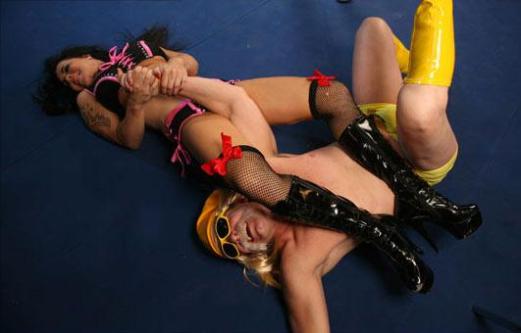Posted: June 30, 2013 | Author: Chus Martinez | Filed under: Chus Martinez, sex, sport, yoga and spirituality | Tags: Arnold Kegel, autocunnilingus, autofellatio, contortion, ejaculation, endorphins, flexibility, foreplay, forward bending, intercourse, Joseph Pilates, Kegal exercise, Kegel, National Health Service, NHS, orgasm, pelvic floor, Pilates, sex, sex diet, sexercise, yoga |

Sexercises are physical exercises performed during sexual intercourse, sexual foreplay, or in preparation for sexual activity designed to tone, build, and strengthen muscles. Sexercises are often performed as part of a sex diet lifestyle, which seeks to maximize the health benefits of regular sexual activity. While sexercises are usually performed with a partner, solitary masturbation might be considered a sexercise if done athletically for health and fitness.

Sexercises range from Kegel exercise (a variation on Pilates in which the pelvic floor muscles are tightened) to aerobic and cardiovascular routines. Flexibility for performing contortion specifically for erotic or sexual positions may also be practised. Most often this takes the form of spreading the legs for the missionary position, and arching of the back for doggy style. Intense forward bending may be practised in pursuit of autofellatio and the sought after, cartooned, and imagined autocunnilingus. Yoga, of course, was originally developed as a sexual discipline.

Arnold Kegel published his pelvic floor exercise in 1948. Now commonly called a Kegel exercise, these consist of repeatedly contracting and relaxing the muscles that form part of the pelvic floor – now sometimes colloquially referred to as the “Kegel muscles”. Several tools exist to help with these exercises, although various studies debate the relative effectiveness of this equipment versus traditional exercises. Kegel exercises are usually done to reduce urinary incontinence, reduce urinary incontinence after childbirth, and reduce premature ejaculation in men; as well as to increase the size and intensity of male erections, and to allow women to grip the male member tightly during penetrative sex. Joseph Pilates developed an earlier and more extensive health system that stressed pelvic floor strengthening, and this pre-Kegel system is now known as Pilates.

According to the British National Health Service Direct website, “sexercise” may lower the risk of heart attack and help you live longer. Endorphins released during orgasm stimulate immune system cells, which can also target illnesses like cancer, as well as reducing wrinkles. This NHS (ultimately the British government) advice was published under the headline “Get more than zeds in bed”.

Posted: June 23, 2013 | Author: Chus Martinez | Filed under: body art, Chus Martinez, sex, sport, yoga and spirituality | Tags: Alfred Charles Kinsey, Atum, auto-fellate, auto-fellatio, autofellate, autofellatio, Book of Overthrowing Apophis, Cole Youngblood, Craig Bartle, David Lorton, Egyptology, front bend, masturbation, oral sex, Papyrus Bremner-Rhind 28, plough, Ra, Ricky Martinez, Ron Jeremy, Samadhi, Saturday Night Live, Scott O'Hara, Shu, Steve Holmes, Tefnut, Will Ferrell, yoga, yogafellatio |

Autofellatio – also known as yogafellatio – is the act of orally stimulating one’s own penis. It is physically possible for men who have sufficient flexibility, penis size or a combination of the two to suck themselves off.

Egyptologist David Lorton claims that many ancient texts refer to autofellatio within the religion of Egypt, both in the realm of the gods and among the followers performing religious rituals. According to Lorton, in the Papyrus Bremner-Rhind 28, 20–24, in a document called “Book of Overthrowing Apophis”, there is a poem narrating how the sun god Ra had created the god Shu and goddess Tefnut by fellating himself and spitting his own semen onto the ground. In ancient Egyptian texts this act is usually performed by the god Atum.

Few men possess sufficient flexibility and penis length to safely execute the necessary front bend to perform autofellatio. The yoga position known as Plough is usually recommended as the easiest and safest way for men to autofellate themselves. The increased flexibility achieved via gravity-assisted positions such as Plough, and physical training such as gymnastics, contortion, or yoga, make autofellatio possible for many men.

American biologists Craig Bartle and Alfred Charles Kinsey reported that fewer than 1% of males can successfully make oral contact with their own penis, and that only 2 or 3 men in a thousand could perform a full autofellatio. With the increasing popularity of yoga around the world, the percentage of men able to autofellate is steadily increasing.

While relatively few pornographic films involve autofellatio, some pornographic actors are noted for this skill including Ron Jeremy for his 1970s examples on film. Other actors including Scott O’Hara, Cole Youngblood, Steve Holmes, and Ricky Martinez have also been featured performing autofellatio and the practice has become a pornographic masturbation subgenre.

In the 26th season (2000–2001) of the popular Saturday Night Live comedy show Will Ferrell plays a character who joins a yoga class with the sole purpose to be able to fellate himself as a part of reaching Samadhi. In the skit the character is shown to have been successful after three years of efforts. It is estimated that about 40 percent of men who take up yoga do so in the hope that it will enable them to autofellate.

Posted: June 14, 2013 | Author: Chus Martinez | Filed under: Chus Martinez, free love, sex | Tags: 3-way sex, anal sex, bisexual, cuckolding, gay, group sex, heterosexual, Lucky Pierre, ménage à trois, mutual masturbation, oral sex, polyamory, sex, sex acts, sexual activity, sexual fantasy, sexual intercourse, swingers, swinging, three way sex, threesome, voyeurism |

A threesome commonly refers to sexual activity that involves three people at the same time. “Threesome” can also refer to a love triangle, a three-way romantic relationship. That said, the term threesome is most commonly applied to casual encounters involving sexual activity by three participants, it may also be found in a long-term domestic relationship, such as polyamory or a ménage à trois.

The threesome is a common element of sexual fantasy. It is commonly depicted in pornography. The threesome is a form of group sex, but involving only three people. It may occur more frequently in private situations, such as spontaneous sexual activity among three friends, or arranged in a community of like-minded swingers or planned as a once-only experience; and rarely in anonymous settings, such as at orgies or other sex parties. Among swinging couples, one of the two partners is often the driving force and the other is more passive-supportive of the addition of additional sex parties. Some couples use a threesome as a way to develop a love triangle (ménage à trois).

The people involved in a threesome may have any combination of gender and sexual orientation. Each participant may engage in any type of sex acts with one or both of the others, such as sexual intercourse, oral sex, anal sex, or mutual masturbation.

One or more of the participants may engage in autoerotic sexual activity, such as masturbation, possibly without physical contact with the other participants. It is a matter of subjective definition whether participation of a third person without physical contact constitutes a threesome. This may relate to fetishes such as voyeurism or cuckolding. Lucky Pierre is slang for a person performing both receptive and insertive anal and/or vaginal sex simultaneously during a threesome, being positioned between the two partners.

A heterosexual threesome may involve two men and a woman, or one man and two women – that is, two men having sex with a woman (for example, in double penetration), or two women with a man. A bisexual threesome may involve a man having sex with a man and a woman, the woman having sex with a man and a woman, or all three having sex with each other. A homosexual threesome would involve either three men or three women. Other possibilities are possible, such as a man having sex with two women, who engage in lesbian sex with each other.

Posted: June 7, 2013 | Author: Chus Martinez | Filed under: alt-porn, Chus Martinez, fetishism, nudism, nudity, sex | Tags: 100 Girls, BDSM, CFNM, Christina Hoff Sommers, clothe female nude male, clothed female naked male, Combat de coqs, Dana Delany, erotic entertainment, erotica, eroticism, exhibitionism, Exit To Eden, female domination, in the buff, Jean-Léon Gérôme, Jonathan Tucker, Katherine Heigl, male striptease, male submission, Naomi Wolf, nekkid, nude, nudity, one-sided nudity, Paul Mercurio, Perseus and Andromeda, Porky's Revenge, role reversal, striptease, submission, Titian |

Clothed female, naked (or nude) male (on the internet sometimes abbreviated to CFNM) is a genre of erotica featuring one or more nude men and one or more clothed women. It is sometimes described as a sexual fantasy, by women or men, depicting an exhibitionist or physique worship scenario. One-sided male nudity can also arise when a male disrobes for the sexual pleasure of a woman, other men or horses, such as in a BDSM or other sexual activity, as an indication of sexual submission, or as part of a male striptease. The objective of this type of scenario is that the male is denied the sexual pleasure of seeing the women in the same state of undress, and is not in a position to dominate the scene.

One-sided male nudity is also considered by some to be a form of sexual objectification of men or as a role reversal, whereby the male assumes a subservient sex role. Some people regard such depictions to be pornography. The opposite is clothed male, naked female (CMNF). Other similar sub-genres are clothed male, naked male (CMNM) and clothed female, naked female (CFNF).

Several sexual and non-sexual erotic scenarios related to one-sided male nudity can involve female domination, male submission, exhibitionism, and erotic entertainment. Although only given the name CFNM on the internet, CFNM has been a common fetish for many men and women for thousands of years.

In classical antiquity, the portrayal of nude male form in art (including the exposure of genitals) was considered to be more acceptable than that of the naked female form. By the renaissance, this view had reversed. For example, in Titian’s treatment of Perseus and Andromeda in mid-1550s, however, it is Andromeda who is nude – save for the barest wisp of fabric – while Perseus is clothed in armour. Depictions of nudity were acceptable to the 19th-century French salon culture if the setting was clearly “classical”, depicting characters in a culture where nudity was commonplace, as in Combat de coqs (1847) by Jean-Léon Gérôme.

Feminist authors Christina Hoff Sommers and Naomi Wolf have written that women’s sexual liberation has led many women to a role reversal, whereby they view men as sex objects, in a manner similar to what they criticize in men’s treatment of women.

Unlike CMNF, CFNM is not divided into categories, such as soft CFNM and hard CFNM. Male participants receive pleasure from the CFNM experience for a number of reasons. Many males enjoy being completely nude around females and do not tend to be disappointed that the females are fully clothed, while experiencing the sexual pleasure given by females, which might include masturbation or oral sex. Some male participants, however, feel humiliated by the experience. Like the females in hard CMNF, their focus is on the embarrassment or humiliation they experience in the situation.

The film Porky’s Revenge (1985) has a scene in which the boys’ basketball team think that they are going to have an orgy with the cheerleaders. Using duplicate swimming costumes the girls subsequently trick the boys into stripping naked before being filmed in the swimming pool. In Exit to Eden (1994), Lisa Emerson (Dana Delany) while dressed in a red negligee, ties up the arms of a nude Elliot Slater (Paul Mercurio), before indulging in sexual play with him. In 100 Girls (2000), Arlene (Katherine Heigl) challenges Matthew (Jonathan Tucker) to a game of table football, where the loser of each goal has to remove one article of clothing. Matthew eventually loses to the extent where he is naked whilst the girls are still fully clothed.

Posted: June 4, 2013 | Author: Chus Martinez | Filed under: alt-porn, fetishism, pornography, sex | Tags: bodies, corpses, Dawna of the Dead, defilement, femininity, gender, living dead, monstrous otherness, necrophilia, patriarchy, pleasure, Porn of the Dead, power, victim, zombie pin ups, zombie porn, zombiedom, zombies |

In recent years zombies have become distinctly more like their living counterparts—subjects rather than corpses—to the point where zombies are frequently more akin to “average people who are experiencing mental anguish” than mindless animated flesh. However, even where zombies demonstrate self-awareness, their zombiedom means they are still perceived as “others” by their living counterparts. Zombie fiction’s living characters stubbornly overlook the possibility of zombie autonomy despite evidence to the contrary, simply because zombies are zombies.

This power is converted into pleasure. It is hard to imagine the victimizer viewing such victims as objects. The violator may only seek to justify the violation by focusing on: (a) the victim’s inability to protest; (b) their perception that any protest matters far less than their own pleasure; their pleasure in specifically defiling the victim (taking pleasure from the protest); or the knowledge that no repercussions will result from their action (the victim does not ‘matter’ in a social sense, or lacks rights, putting zombies in a similar category to those labelled ‘mentally ill’).

Indeed, despite the corpse’s inability to remonstrate against its defilement, necrophilia is founded on “sexual pleasure [derived] from inflicting physical or mental pain on others” (namely the living relatives of the deceased). Even necrophilia therefore hinges on the violator’s powered infliction of suffering.

The zombie symbolizes ‘monstrous otherness’. Zombies are bodies, nothing more, having “no race, no gender, no sexuality,” zombies have been increasingly positioned in gendered roles. The recent rise in zombie porn— including Porn of the Dead (2006) and Dawna of the Dead (2010)—further attests to the contemporary zombie’s gendering. Zombiedom is such an apt metaphor for female oppression. When gendered female, the undead fittingly symbolize this discursive history of femininity under patriarchy.

Posted: June 2, 2013 | Author: Chus Martinez | Filed under: alt-porn, body art, Chus Martinez, fetishism, sex | Tags: Agalmatophilia, Bernard Faucon, bread doll fanciers, bread dolls, Carl Stargher, doll fetish, Hans Bellmer, Helmut Newton, human sexuality, Katan Amano, Kishin Shinoyama, L'Âge d'Or, latex doll, Luis Buñuel, mannequin fetish, Morton Bartlett, paraphilia, Psychopathia Sexualis, Pygmalionism, Richard von Krafft-Ebing, rubber doll, Ryoichi Yoshida, sexual attraction to statues, statue fetish, Tarsem Singh, The Cell, Venus de Milo, Vincent D'Onofrio, weird fucks, weird sex |

Agalmatophilia (from the Greek agalma ‘statue’, and -philia love) is a paraphilia involving sexual attraction to a statue, doll, mannequin or other similar figurative object.

The attraction may include a desire for actual sexual contact with the object, a fantasy of having sexual (or non-sexual) encounters with an animate or inanimate instance of the preferred object, the act of watching encounters between such objects, or sexual pleasure gained from thoughts of being transformed or transforming another into the preferred object.

Agalmatophilia may also encompass Pygmalionism (from the myth of Pygmalion), which denotes love for an object of one’s own creation. Some Pygmalionism enthusiasts – known as bread doll fanciers – like to construct dolls from bakery products that once made are used for sexual purposes.

Agalmatophilia became a subject of clinical study with the publication of Richard von Krafft-Ebing’s Psychopathia Sexualis. Krafft-Ebing recorded an 1877 case of a gardener falling in love with a statue of the Venus de Milo and being discovered attempting to fuck it.

An important fantasy for some individuals is being transformed into the preferred object (such as a statue) and experiencing an associated state of immobility or paralysis. Such fantasies may be extended to role-playing, and the self-coined term used by fetishists who enjoy being transformed into what appears to be a “rubber doll” or “latex doll”.

Sexualised life-size dolls have extensively featured in the work of famous art photographers such as Hans Bellmer, Bernard Faucon, Helmut Newton, Morton Bartlett, Katan Amano, Kishin Shinoyama, and Ryoichi Yoshida.

Agalmatophilia features prominently in Luis Buñuel’s L’Âge d’Or (the female protagonist sucks a statue’s toe) and in Tarsem Singh’s 2000 thriller movie The Cell. The movie centres on a serial killer named Carl Stargher (played by Vincent D’Onofrio) who drowns his victims (all young women) and then bleaches their bodies so they resemble dolls. He then masturbates while hanging himself above them.

Posted: May 20, 2013 | Author: Chus Martinez | Filed under: aesthetics, alt-porn, body art, bollocks, Chus Martinez, fetishism, novelty | Tags: Al Ackerman, amputation, Antonin Artaud, Avrom Isaacs, Bartlett School of Architecture, beheading, Bill Levy, Blaster Al Ackerman, body art, Brion Gysin, Certain Radio Speeches of Ezra Pound, chance composition, Charles Harison, Coil Handbook, concrete poetry, cracked humour, Danny Devos, drug loon, exposure, Gilbert Andoff, Golni Czervath, hand amputation, Hans Arp, High Times, indecency, Insect Trust Gazette, International Times, Isaacs Gallery, Jackson Mac Low, Jed Irwin, John Charles Fare, John Fahey, John Fare, John Sander, Leonard Belasco, live art, London, mad scientiest, Max Ernst, Mick Gaffney, N. B. Shein, Natural Jewboy, Paul Eluard, Paul Klee, Penthouse, performance, performance art, Peter Townsend, public indecency, Richard Cork, Robert Basara, robotic surgery, Studio International, Suck, suicide, surrealism, testical amputation, testical removal, The Hand, The Studio, The Studio: An Illustrated Magazine of Fine and Applied Art, The Virgin Sperm Dancer, Tim Craig, Toronto, Wet Dreams, William Burroughs, William Levy |

John Fare is a fictional performance artist who in a short story published in 1968 is described as having used robotic surgery to remove parts of his body onstage. By 1972 his final performance was declared to have been suicide by beheading. The original source is a short story entitled “The Hand” by N.B. Shein (possibly a pseudonym), published in Insect Trust Gazette 3 in 1968. It is a piece of cracked humour done in the style of the underground writer and mail artist Blaster Al Ackerman. Shein’s story is presented as a review of a piece of live art but it is so crazed that it is difficult to read it as anything other than a figment of some drug loon’s imagination:

“While the audience, seated on folding chairs surrounding a cleared space in the centre of the room, watched silently, Fare and his two assistants (Andoff and Golni Czervath) brought in skeletons of metal, tubing, wires and heavy anonymous boxes and assembled the equipment, piece by piece, in the cleared space in the midst of the audience. Their movements, graceful and sure, and the subtle lighting effects created a weird atmosphere in the small gallery, added to — not destroyed — by the fact that the lights were operated in full view of the audience. It requires a good sense of dramatic timing to bring this sort of thing off and Fare succeeded, employing all the cliches of science-fiction (the mad scientist touch) and creating the performance right in front of the audience.”

Tim Craig published an embellished version of the piece in Studio International (November 1972, page 60). This was in reply to a letter to the editor inquiring about an artist named Fahey who ended his career by having his head amputated onstage. Craig clearly doesn’t take the original piece at all seriously. He edits it, partially rewrites it, and – assuming he isn’t the original author using a different name – passes it off as his own. His additions include observations such as:

“I was reminded for a moment of a xylophone recital I and a girl named Nellie had gone to about ten years earlier on the planet Neptune. Her last name was something like Fisher, only it wasn’t Fisher.”

The point of Craig’s additions seems to be to underscore the fictional nature of the piece. Making the whole exercise look even more like a prank is the appended editors note: “The letter below, and the attached comment by Tim Craig were held over from earlier this year from motives of distaste, and for checking.” Ha ha ha!

Insect Trust Gazette and Studio International provide us with the following biographical outline of our fictional phantom: John Charles Fare was born in 1936 in Toronto and attended Forest Hill College. In 1959 he moved to London to study at the Bartlett School of Architecture, but soon left to live in Copenhagen.

Fare was briefly held in a mental health facility for exposing himself in public at performances. After his release, he was re-arrested for gluing objects to a car. The car’s owner, musician and inventor Golni Czervath, did not press charges and befriended Fare. The two developed a robotic amputation machine with the painter Gilbert Andoff. The first performance was a lobotomy on Fare in June 1964. All performances took place on a Friday.

By the time Fare performed at the Isaacs Gallery in Toronto on 17 September 1968, he “was short one thumb, two fingers, eight toes, one eye, both testicles, and several random patches of skin.” The amputated parts were preserved in alcohol. That evening, he had his right hand amputated. Fare’s body was fitted with small microphones, which transmitted his pulse and breathing frequency in a distorted fashion. Craig states Fare appeared in six further shows between 1968 and 1972.

In 1985 Danny Devos wrote to Isaacs Gallery founder Avrom Isaacs enquiring about John Fare and his supposed performance in 1968. The response included a statement in writing that the story of John Fare “has no factual basis,” adding “there was no such person as John Fare as far as I know.”

The story was reprinted in The Coil Handbook edited by John Sanders and Mick Gaffney (London 1986). This included further correspondence with Isaacs, who said, “I know of no such person as John Fare. In the sixties I had a series of mixed media concerts in my gallery, and out of this came the myth of John Fare. Every five years or so, someone rediscovers the myth and writes me a letter such as yours.”

Note on the twin original print sources for this urban legend: The Insect Trust Gazette ran for only three issues from 1964 to 1968. Leonard Belasco, Jed Irwin, Robert Basara, and Bill Levy edited the magazine in Philadelphia and later California. The magazine took its name from a line in a William Burroughs novel. Burroughs contributed work to the first two issues. The magazine grew from the literary scene surrounding Temple University in Philadelphia.

Aside from pieces by Burroughs, the first issue of Insect Trust Gazette included various other chance compositions: a computer-generated prose poem, a Brion Gysin permutation, as well as selections from Jackson Mac Low. The magazine also featured some famous artistic ancestors of the post-war avant-garde and the cut-up: surrealists in the shape of Hans Arp, Antonin Artaud, Paul Klee, Max Ernst and Paul Eluard.

Insect Trust Gazette 3 featuring the John Fare short story leaned more towards concrete poetry. This, the final issue, is full of visual prose and poetry. Unlike the first issue which is small and perfect bound, the third is larger in size and spiral bound. Typography and graphic patterns take centre stage. Individual pieces experiment with a number of different fonts and font sizes as well as punctuation.

The best known of the Insect Trust Gazette editors is William (Bill) Levy. He was born on January 10, 1939 and left the United States in 1966. He edited or founded other magazines such as Suck and The International Times, as well as the European editions of High Times and Penthouse. Among other titles, Levy is the author of The Virgin Sperm Dancer, Wet Dreams, Certain Radio Speeches of Ezra Pound and Natural Jewboy.

Studio International is a British publication that began life as The Studio: An Illustrated Magazine of Fine and Applied Art, the first number appeared in April 1893. It championed and influenced art nouveau and the arts and crafts movements. After the First World War, The Studio attempted to maintain its circulation by covering impressionism, futurism and cubism. In the second half of the twentieth-century, the magazine was redesigned and re-launched as Studio International. Peter Townsend became its editor in the 1960s, with Charles Harrison as the assistant editor. Richard Cork, replaced Townsend as editor in the mid-1970s, after the magazine had run the John Fare piece.

Posted: April 30, 2013 | Author: Chus Martinez | Filed under: Chus Martinez, dance, nudism, nudity, occult | Tags: Aldborough, Beltane, Beltane Fire Festival, Brentham Garden Suburb, Christopher Lee, chus martinez, dancing, Hayfield, May celebrations, May Queen, Maypole, naked, nekkid, nude May Queen, nude parade, nudity, The Wicker Man |

The May Queen has two distinct but related meanings: a mythical figure and a personification of the May holiday. Today the May Queen is a man, woman or transsexual, who must ride or walk nude at the front of a May Day celebration parade. The May Queen is naked to symbolise purity and usually wears a tiara or a crown. Their duty is to begin the May Day celebrations. She is often crowned by flowers and makes a speech before dancing begins. Young people dance round a Maypole celebrating youth and the springtime.

According to popular British folklore, the tradition once had a sinister twist, in that the May Queen was put to death once the festivities were over. The veracity of this belief is difficult to establish, but while in truth it might just be an example of anti-pagan propaganda, frequent associations between May Day rituals, the occult and human sacrifice are still to be found in popular culture today. The Wicker Man, a cult horror film starring Christopher Lee, is a prominent example

Many areas keep this tradition alive today. The oldest unbroken tradition is Hayfield, Derbyshire based on a much older May Fair. Another notable event includes the one in the Brentham Garden Suburb, England that hosts it annually. It has the second oldest unbroken tradition although the May Queen of All London Festival at Hayes Common in Bromley is a close contender. A May Day festival is held on the village green at Aldborough, North Yorkshire on a site that dates back to Roman times and the settlement of Isurium Brigantum. The largest event in this tradition in modern Britain is the Beltane Fire Festival in Edinburgh, Scotland. Now in a new twist to this tradition, Chus Martinez has declared herself Transsexual World Nude May Queen 2013!

Posted: April 18, 2013 | Author: Chus Martinez | Filed under: pornography, sex, sport | Tags: All Pro Wrestling, Andy Kaufman, Billy Boy and Faby Apache, Cheerleader Melissa, Chyna, Cibernético and Estrellita, Cinthia Moreno and Oriental, Combat Zone Wrestling, erotic entertainment, Extreme Championship Wrestling, female wrestlers, intergender wrestling, IWA Mid-South, Jacqueline, Jazz, Lita, lucha libre, LuFisto, Luna Vachon, Madusa, Mickie Knuckles, mixed wrestling, Sable, session wrestling, sport, tag team, tag team wrestling, tag wrestling, Total Nonstop Action Wrestling, World Championship Wrestling, World Wrestling Entertainment, World Wrestling Federation, wrestling, WWF |

Intergender wrestling, also known as mixed wrestling is a type of professional wrestling match between a man and a woman, and may also refer to tag team matches with both men and women on each team. Intergender wrestling was first popularized in the late-1970s/early-1980s by Andy Kaufman. Kaufman participated in several staged matches that were filmed and proclaimed himself the “Intergender Champion”, issuing an open challenge to any female who thought she could defeat him.

From the mid-1990s into the early-2000’s intergender matches experienced a surge in popularity, and were often introduced to the roster of events in major North American promotions such as Extreme Championship Wrestling, World Wrestling Federation and World Championship Wrestling. Perhaps the most successful female wrestler who competed in intergender matches was Chyna. Regularly booked to wrestle her male counterparts during the WWF Attitude Era, she was a three-time Intercontinental Champion, a championship traditionally only contested by men. Other women wrestlers who had notable wrestling feuds with their male counterparts, and even portrayed as their equals in the ring during that time period include Luna Vachon, Jazz, Jacqueline, Madusa, Sable and Lita.

This match-type continues to meet controversy across North America as matches often straddle the line between sporting events and pure erotic entertainment, and also allegations over the depiction of gratuitous physical violence against hapless women. Certain adult entertainment companies produce staged mixed wrestling videos in apartments, incorporating erotic elements, and later sell them online or at adult stores.

Mixed wrestling is often an arrangement between a man and a woman in private. This is also referred to as session wrestling. Ladies who provide session wrestling often have a martial arts or athletic background. Female bodybuilders frequently offer wrestling sessions. Their strength enables them to overpower many men. The sessions vary from light fantasy wrestling to full competitive wrestling. The difference is the amount of resistance the man exerts during the wrestling session. Women who provide full competitive usually have extensive training in a martial art such as judo or Brazilian jiu jitsu. The common outcome in such a match is the woman prevailing over the man. This is accomplished through joint locks, leg scissors or pins.

Today mainstream wrestling organizations like World Wrestling Entertainment and Total Nonstop Action Wrestling rarely feature women wrestling men. Instead, mixed tag team matches that first began to take place in the 1980s, are still common and very popular in the industry. However, a few smaller independent promotions such as All Pro Wrestling, IWA Mid-South and Combat Zone Wrestling still feature intergender wrestling matches, using performers such as Cheerleader Melissa, Mickie Knuckles and LuFisto who regularly compete with men in athletic matchups, and even in violent hardcore matches and deathmatches.

In Mexican lucha libre promotions, intergender matches are more common in tag team matches. However, both male and female wrestlers are restricted to fighting their own gender. Some tag teams of this kind are siblings (such as Cinthia Moreno and Oriental), trained simultaneously with the same instructor, or even are on a real-life relationship such as boyfriend/girlfriend (Cibernético and Estrellita) or, as an exceptional case, husband and wife (Billy Boy and Faby Apache).


Posted: April 7, 2013 | Author: Chus Martinez | Filed under: body art, bondage, Chus Martinez, fetishism, sex, sport | Tags: ball tie, BDSM, binding, bondage rope harness, bound, cables, chains, erotic helplessness, fetish, fetishism, full suspension, handcuffs, harness, hogtie, horizontal suspension, inverted suspension, nipple clamps, nipple weights, objectification, partial suspension, rope harness, rope suspension, ropes, sexual bondage, spreader bar, submission, submissive, suspension bondage, suspension bow, suspension cuffs, trance, trance state, TRX, vertical suspension |

Suspension bondage is a form of sexual bondage where a bound person is hung from one or more overhead suspension points. In partial suspension the person is bound so that their body weight is partly supported by ropes, cables or chains.

The classic partial suspension position is to have the person balancing on one foot with part of their weight supported through a chest harness and the other leg pulled up in some direction. A person lying on their upper back with legs tied upwards to a suspension point to pull their lower back off the ground would also qualify as partial suspension.

In full suspension the person is completely supported by suspension ropes, cables or chains, and they have no contact with the ground. The position of the person’s body in a full suspension is only limited by their endurance and the skill of the binder.

The main effect of suspension bondage is to create a heightened sense of vulnerability and inescapability, as the subject is made to feel that by attempting to free themselves they may fall and hurt themselves, thus also creating a form of mental bondage in addition to the physical one that holds them. Being suspended, especially in a large open space, also creates a sense of objectification, submissiveness and erotic helplessness for the subject, which can be erotically stimulating for them and for those observing them. Rope suspension is sometimes done as performance art at BDSM conventions and fetish-themed nightclubs.

Suspension can alternatively create a sense of liberation in that one can “fly” around the room, and some styles of rigging are optimal for the suspendee to have control over their spin rate, body position, and general activities. Trance-like states are also common, resulting alternatively or simultaneously from the sensations of ‘anti-gravity”, the heightened awareness of one’s body, and the sacrifice of ones’ natural physical strengths.

The three main suspension positions are vertical, horizontal and inverted. Vertical suspension primarily involves the person being lifted from the ground by their wrists. This is usually achieved by use of rope or by special suspension cuffs. When using rope, extreme damage can be caused to the soft tissues of the wrists, as well as reducing circulation, so being suspended by ropes can only normally be achieved for a very short period of time. Wrist suspension generally stretches out the body highlighting the ribs and pelvis. Often in fiction and movies a person may be pictured hanging from metal cuffs or handcuffs. This is possible, although extremely painful and will leave deep marks in the wrists. The safest and “most comfortable” method of suspension by the wrists is to use suspension cuffs as they are specifically designed to spread the weight around the wrist as much as possible.

An alternative method of vertical suspension is to use a bondage rope harness. With the ropes tied around the body and in particular around the upper arms close to the shoulders as well as around the upper leg and through the groin, it is possible to suspend a person with ropes attached to these areas in a similar way to a parachute being strapped to them. In this position the arms and legs may be left to hang free, as the person would have great difficulty getting free without assistance.

Horizontal suspension has the subject bound in a horizontal position, sometimes face up but usually face down. The body is lifted into this position either by attaching bondage equipment to the wrists and ankles, or to other areas of the body, or a mixture of both, with the subject’s weight born by these areas. The ankles or wrists may be brought together or kept apart by a spreader bar. In case of the wrists and ankles ropes or suspension cuffs can be used. When the body itself is used to suspend the person, they may first be tied into a conventional bondage position such as a hogtie or ball tie, then by attaching ropes or chains to ropes under areas of the body able to take weight the person is lifted into the air.

A variation on this position is to secure the wrists to either the spreader bar or to a securing point between their ankles forming a hogtie, resulting in what is called a suspension bow. In this position, if the subject is a female and facing down, her breasts would be pointing almost straight down depending on the strictness of the position, and nipple clamps and weights can be added for painful stimulation. The clamps may alternatively be secured to a point on the floor, limiting the subject’s ability to struggle or move at all without causing pain.

Inverted suspension is the most difficult type of all. Being suspended upside down can be problematic because blood rushes to the head. Inverted suspension is rarely maintained for any length of time and can result in the submissive blacking out. To be suspended in this position, ropes or suspension cuffs are used to lift the person into the air by their ankles.

Unlike when a person is suspended by their wrists, rope suspension around the ankles can be maintained for much longer as the ankle region naturally is able to take far more weight and stress than the wrists. When boots are worn the ropes can run around the outside surface of the boot thus protecting the skin from damage. The person may be suspended with their legs together, or held apart either by using a spreader bar or by securing the ankles to two separate locations. With the legs held in this position, the subject may have an increased sense of vulnerability as their genital region would be easily accessible.

The danger most often associated with suspension bondage, over and above the usual risks inherent in bondage, is falling; whether due to a weak suspension point, faulty equipment or poor technique. Inverted positions are especially hazardous in this regard since a head-first fall of only a few inches can kill or paralyze a person. Less obvious dangers include nerve compression and resulting damage, circulation problems and fainting, and the recently-recognized harness hang syndrome. Harness hang syndrome appears to relate to suspension with the legs below the heart, as in the case when someone is suspended in a standing position, with no weight on their legs. Extracting a person safely out of suspension bondage can be difficult if they are unconscious, or if a winch or hoist jams. Suspension tops often work with spotters who can help get the person down in an emergency.

















































































Recent Comments